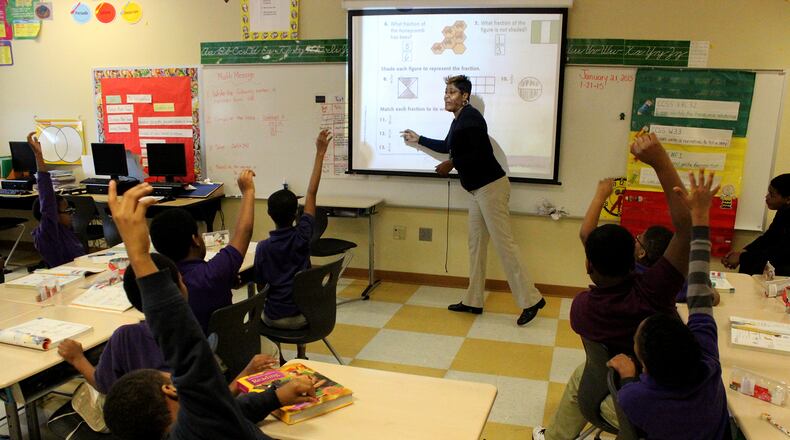These tests have been given for decades to a small, representative sample of students nationwide. Dramatically fewer students take these tests (just under 2,500 in Ohio) as compared to Ohio’s own state tests. But since NAEP’s exams are the same in all states, they are often used for direct comparison between states. NAEP tests were administered in early 2022 for the first time since 2019.
Shannon Cox, the Montgomery County Educational Service Center’s superintendent, said there was an expectation that the scores would be lower this year. She said taken in context with other testing data, there’s been a clear decline in students’ proficiency in reading and math.
“The fact that they are lower than they have been in the last two to three tests isn’t necessarily a newsflash,” Cox said. “It just does mean that we’ve got some work to do.”
Ohio scored above the national average on all four NAEP tests — fourth-grade reading, fourth-grade math, eighth-grade reading and eighth-grade math. Ohio ranked around 10th of 50 states on both reading tests, and in the high teens on both math tests.
An analysis by education journalism group Chalkbeat showed that Ohio’s decline from its 2019 results was worse than the national average on both eighth-grade tests, but not as bad as the national average on the fourth-grade tests.
Every state’s 2022 NAEP scores were worse than 2019 on at least two of the four tests, and a majority of states were worse on all four.
“Because of the pandemic, more students than ever are struggling to achieve math and reading proficiency in Ohio,” said Aaron Churchill, Ohio policy director for the Fordham Institute, an education think tank.
The findings are on par with other testing data, including Ohio’s own state testing data from early 2022, which showed students were behind in both reading and math. Black, Latino and low-income students, along with students with disabilities and English language learners, generally did worse on Ohio’s state exam.
Churchill called the eighth-grade math results “truly a disaster,” as Ohio’s proficiency rate in math slid from 38% in 2019 to 29% in 2022. He noted eighth-grade reading proficiency rates fell from 38% to 33% during this same period.
Ohio fourth graders, the other major testing demographic for NAEP, also saw a decline in math proficiency, from 41% to 40%, and in reading, from 36% to 35%.
Churchill called on the state to make sure students get the help they need to be successful in math and reading.
“State leaders must ensure that schools are effectively teaching core academic content, as well as providing extra supports and interventions when students are struggling,” Churchill said.
Nationally, math scores dipped by the largest margins in the history of the test, which began in 1969. About 38% of eighth graders scored “below basic,” which measures, for example, if a student can find the third angle of a triangle if given the other two. In 2019, 31% of eighth graders scored at that level.
It wasn’t just math. National reading scores dropped to 1992 levels, with just 31% of eighth graders and 33% of fourth graders scoring “proficient” on the test.
Cleveland is one of a few large school districts nationally (the only one in Ohio) where a larger number of students take the tests. Cleveland saw scores drop dramatically, as fourth-graders saw a 16-point decline in reading proficiency and a 15-point decline in math.
The Associated Press contributed to this report.
About the Author

